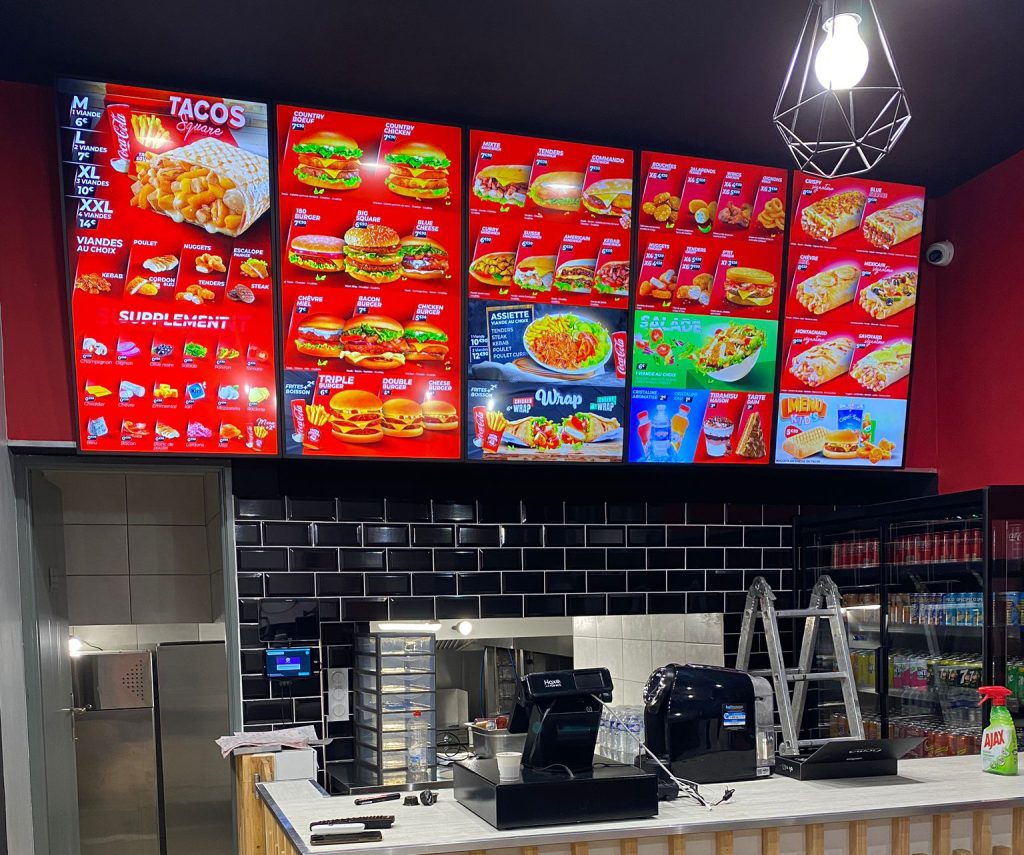8 reasons to use digital signage in a restaurant

Digital signage is a powerful tool that can help restaurants increase sales and improve customer experience.
Here are some of the benefits of using digital signage in restaurants:
1. Increased sales
Digital signage allows restaurants to showcase menu items, promotions, and special deals in a visually appealing way. This can help increase sales by drawing customers’ attention to items they may not have otherwise considered. Additionally, digital signage can be updated in real-time, allowing restaurants to quickly and easily promote new menu items or special deals.
2. Improved customer experience
Digital signage can be used to display wait times, upcoming events, and other information that can help improve the customer experience. For example, digital signs can be used to inform customers of any wait times for tables, allowing them to plan their visit accordingly. Additionally, digital signage can be used to promote upcoming events, such as live music or trivia nights, helping to attract customers who may be looking for a specific type of entertainment.
3. Increased brand awareness
Digital signage can be used to display a restaurant’s branding, logo, and other marketing materials. This can help increase brand awareness among customers and make the restaurant more recognizable. Additionally, digital signage can be used to display customer reviews, which can help build trust and credibility with potential customers.
4. Easy to update
Digital signage is easy to update and manage. Restaurants can use digital signage software to create and schedule content, and then remotely update the signs from a computer or mobile device. This allows restaurants to quickly and easily make changes to the content displayed on their digital signs, without having to physically change the signs themselves.
5. Cost-effective
Digital signage is a cost-effective way for restaurants to promote their products and services. Unlike traditional forms of advertising, such as print ads or TV commercials, digital signage does not require ongoing costs such as printing or airtime. Additionally, digital signage can be used in multiple locations, making it a more cost-effective option than traditional signs.
6. Interactive
Digital signage can be interactive, allowing customers to interact with the sign and receive more information. For example, a digital menu board can allow customers to view pictures of dishes, nutritional information, and ingredient information. This can be especially helpful for customers who have dietary restrictions or are looking for specific information about menu items.
7. Better targeting of audience:
Digital signs allow for better targeting of audience by displaying different content for different times of the day, or for different demographics. For example, digital signs can be programmed to display breakfast menu items in the morning, and then switch to lunch and dinner menu items later in the day. This can help ensure that customers are seeing the most relevant information at the most relevant time.
8. Better analytics
Digital signs can provide real-time data on customer engagement and foot traffic, allowing restaurants to track the performance of their digital signage and make adjustments as needed. This can help restaurants optimize their digital signage strategy and improve their ROI.
Conclusion

Digital signage is a powerful tool that can help restaurants increase sales, improve customer experience, and increase brand awareness. With its easy-to-update feature, cost-effectiveness, and ability to target specific audience, digital signage is a great investment for any restaurant looking to boost its bottom line. Additionally, the ability to track customer engagement and foot traffic allows for better analytics and an understanding of customer behavior which can help a restaurant to make informed decisions to improve their digital marketing strategy.